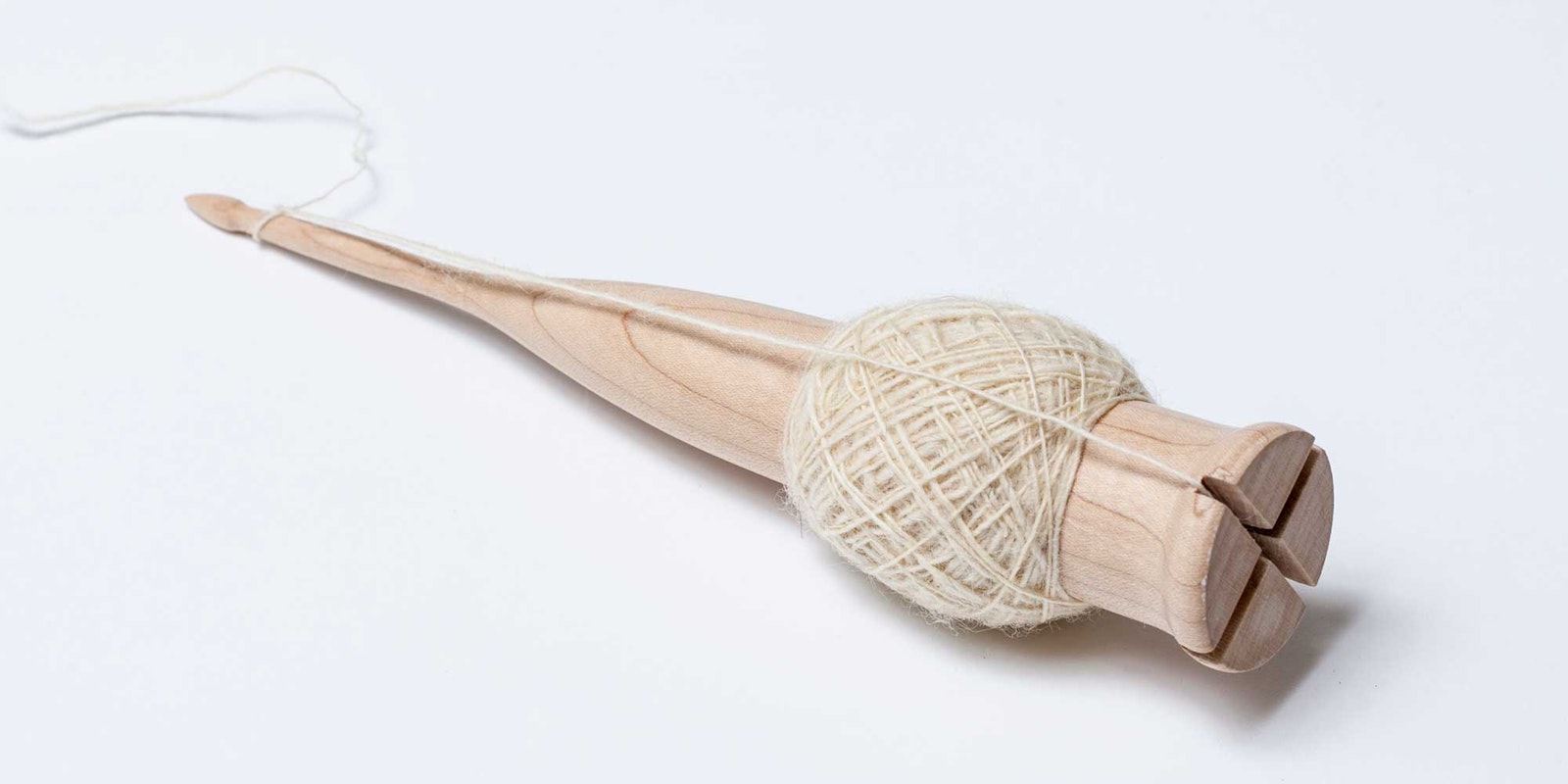Shaped like an electric toothbrush with grooves in the bottom, the Scottish spindle is the first drop spindle I’ve seen without a whorl.
Since meeting Scott, I’ve learned more about the spindle and its use in Cape Breton, Nova Scotia, in Canada, and I’ve come across more Scottish spindles. (It took a while to click that the Scot in “Scotia” is for Scotland.) The Scottish spindle has a long and distinguished history, but I was curious how Scott Snyder came to offer them now.
Where did you first come across the Scottish spindle or dealgan shape?
I remember seeing old photographs quite some time ago but didn’t really think about making them until I started getting a lot of requests from Facebook groups and emails to make them in mid-2016.
 The flared base paired with deep grooves makes it easy to anchor the yarn when spinning on one of Scott Snyder’s Scottish spindles.
The flared base paired with deep grooves makes it easy to anchor the yarn when spinning on one of Scott Snyder’s Scottish spindles.
Are your spindles replicas of the original shape or are they reinterpretations?
They are definitely reinterpretations. I made quite a few different shapes and sizes in the testing phase and started focusing on a smaller size with spinning singles in mind. The biggest change was adding the flared bell on the bottom. The bell exposes the notches, makes [the cross] much easier to locate, and prevents the yarn from popping out when you’re putting the half hitch in.
You’re a spinner; what do you like about them?
I love the simplicity of them, not from a production aspect—they take longer to make than most of my other spindles—but from a visual aspect. They offer a new challenge to spinners. I also love winding a center-pull ball that just pulls off the spindle.
Why do they take longer?
It’s just a different process than my other spindles. There is a lot of material to remove.
Want to learn how to spin on a Scottish spindle? Check out “Try Spinning on a Scottish Spindle.”
Anne Merrow is Editorial Director and cofounder of Long Thread Media.
Originally published May 30, 2018; updated June 2, 2023.

